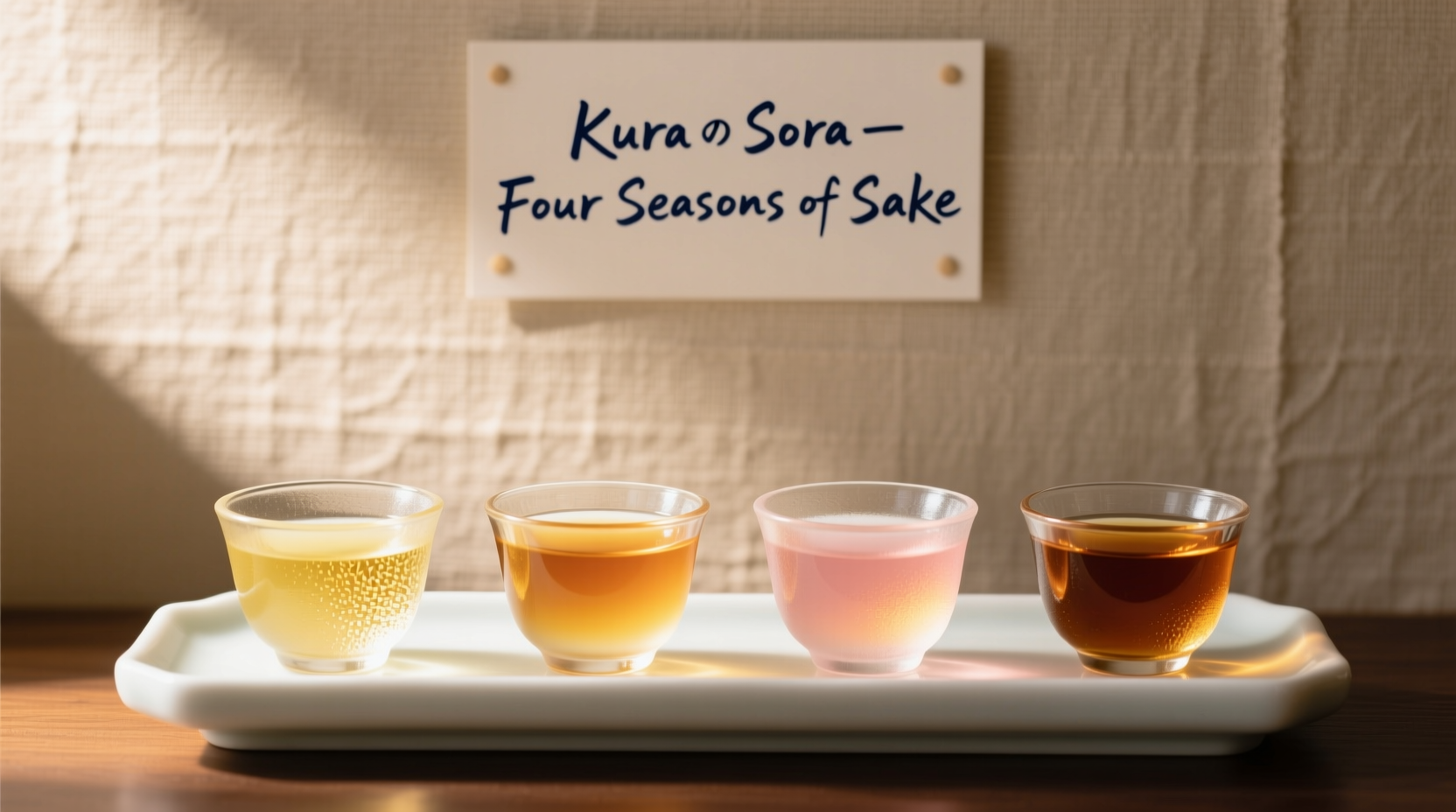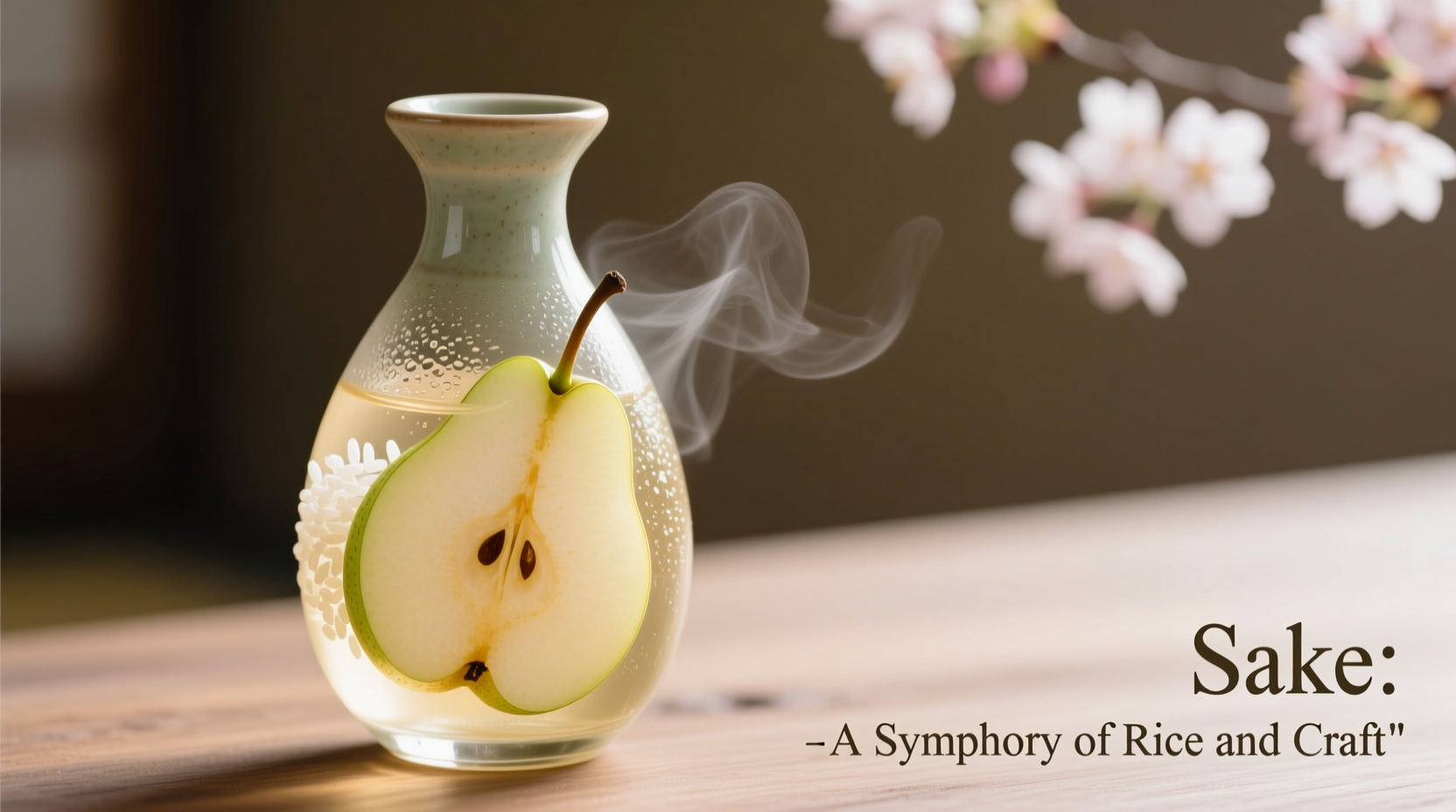Understanding Sake's Complex Flavor Profile
When you take your first sip of sake, you're experiencing one of the world's most nuanced fermented beverages. Unlike wine or beer, sake's taste profile operates on multiple dimensions that interact to create its distinctive character. The most immediate sensation is often a clean, smooth texture that glides across your palate, followed by subtle flavor notes that reveal themselves as the sake warms slightly in your mouth.
Sake's fundamental taste components include:
- Umami - The savory fifth taste that gives sake its satisfying depth
- Sweetness level - Ranging from noticeably sweet (ama-kuchi) to bone dry (karakuchi)
- Acidity - Providing brightness and structure to the flavor profile
- Aroma compounds - Contributing floral, fruity, or earthy notes
- Alcohol integration - Quality sake shows no harsh alcohol burn
| Flavor Dimension | Typical Range | Common Descriptors |
|---|---|---|
| Sweetness/Dryness | -5 (dry) to +15 (sweet) | Crisp, clean, refreshing to rich, rounded, honeyed |
| Acidity | 0.8-2.0 | Bright, zesty to mellow, rounded |
| Umami | Low to High | Subtle savory notes to pronounced richness |
| Aroma Profile | Varietal | Green apple, melon, citrus, floral, rice, mushroom |
What Influences Sake's Taste Profile
The specific taste of any sake depends on several key factors that master brewers manipulate to create distinctive styles. Understanding these elements helps explain why sake can taste dramatically different from one bottle to another.
Rice Polishing Ratio (Seimai Buai)
The percentage of rice grain remaining after polishing directly impacts flavor complexity. Higher polishing (lower percentage) removes more outer layers containing proteins and fats that create heavier flavors, resulting in more delicate, refined sake. According to the National Research Institute of Brewing in Japan, sake with 50% or less rice remaining typically exhibits the most pronounced aromatic qualities.
Yeast Strains and Fermentation Temperature
Just as with wine, the specific yeast strain used in sake production creates distinctive flavor compounds. Different yeasts produce varying levels of esters that translate to specific fruit and floral notes. The Brewing Society of Japan documents over 100 distinct sake yeast strains, each contributing unique aromatic profiles. Fermentation temperature also plays a crucial role - cooler temperatures preserve delicate aromas while warmer temperatures create richer, more robust flavors.
Brewing Method and Water Quality
The mineral content of water used in sake production significantly affects the final taste. Regions known for exceptional sake, like Nada in Hyogo Prefecture, have distinctive water profiles that contribute to their characteristic styles. The water's hardness or softness influences how the rice starch converts to sugar and how the yeast behaves during fermentation.

How Sake Compares to Other Alcoholic Beverages
Many people wonder what does sake taste like compared to wine or other familiar beverages. While sake is often called "rice wine," this comparison is misleading. Sake's production process more closely resembles beer (fermenting grain), but its alcohol content (typically 15-20%) falls between wine and spirits.
Compared to wine, sake generally has:
- More subtle acidity and tannin structure
- Higher umami content from the rice fermentation
- Less pronounced fruit flavors (though modern sake can show distinct fruit notes)
- A smoother, rounder mouthfeel without the astringency sometimes found in wines
Unlike spirits, sake doesn't have the concentrated alcohol heat. Quality sake integrates its alcohol seamlessly, creating a balanced drinking experience where the alcohol enhances rather than dominates the flavor profile.
Practical Sake Tasting Guide
Understanding how to describe sake flavor helps you appreciate its complexity. Follow these steps for a proper tasting experience:
- Temperature matters: Most premium sake is best enjoyed slightly chilled (10-15°C/50-59°F), though some styles shine at room temperature or warmed
- Use appropriate glassware: Small wine glasses or specialized sake cups concentrate aromas
- Observe appearance: Note the clarity and subtle color variations from water-white to pale gold
- Swirl gently to release aromatic compounds
- Smell before tasting - identify primary aroma notes
- Sip slowly, allowing the sake to coat your palate
- Notice the progression of flavors from initial impression to finish
Common Misconceptions About Sake Taste
Many people approach sake with incorrect expectations. Let's clarify some common misunderstandings:
- "Sake tastes like cheap cooking wine" - Quality sake bears no resemblance to the salted, low-grade sake sold for cooking
- "All sake is sweet" - Sake spans the full spectrum from very dry to very sweet
- "Sake should always be served hot" - Only certain robust styles benefit from warming; premium sake is best slightly chilled
- "Sake tastes strongly of rice" - Well-made sake shows subtle rice notes rather than overt graininess
Choosing Sake Based on Your Palate Preferences
Understanding what flavors are in sake helps you select bottles matching your taste preferences:
If you enjoy white wine: Try ginjo or daiginjo styles with their delicate floral and fruit notes. Look for sake with higher seimai buai (more rice remaining) for a richer profile similar to oaked Chardonnay.
If you prefer red wine: Seek junmai sake with its fuller body and umami richness. Kimoto or yamahai styles offer earthy, complex notes that parallel some red wines.
If you like spirits: Consider aged koshu sake, which develops nutty, caramel notes similar to some whiskeys. Nigori (unfiltered) sake offers a creamier texture that spirit drinkers often appreciate.
Remember that sake's flavor evolves as it warms in the glass, so take your time with each sip. The finish of quality sake should be clean and refreshing, inviting another sip rather than leaving a harsh aftertaste.
Contextual Factors Affecting Sake Perception
Your experience of what does sake taste like can vary based on several contextual factors:
- Food pairing: Sake's versatility with food means its perceived flavor changes when paired with different dishes. Umami-rich foods enhance sake's savory notes, while acidic foods highlight sake's sweetness.
- Temperature: As sake warms, its aromatic compounds become more pronounced. What tastes subtle when chilled may reveal complex fruit notes at room temperature.
- Glassware: The shape of your glass affects how aromas concentrate and how the sake flows across your palate.
- Palate fatigue: Like wine, tasting multiple sakes in succession affects your perception, with earlier sips influencing how you perceive subsequent ones.
According to sensory research from the University of Tokyo's Department of Food Science, individual genetic variations in taste receptors also affect how people perceive sake's sweetness and umami levels. This explains why two people might describe the same sake differently - one finding it sweet while another perceives it as dry.
Beginner's Guide to Sake Tasting Notes
If you're new to sake, developing your vocabulary for how to describe sake flavor can be challenging. Start with these basic categories:
- Fruit notes: Green apple, melon, strawberry, citrus, banana
- Floral notes: Cherry blossom, rose, lily, violet
- Earth notes: Mushroom, rice paddy, wet stone
- Texture descriptors: Silky, creamy, crisp, smooth, round
Don't worry about identifying every nuance immediately. Even experienced tasters focus on just 2-3 dominant characteristics when first encountering a new sake. The key is developing your own reference points for what does sake taste like to you.











 浙公网安备
33010002000092号
浙公网安备
33010002000092号 浙B2-20120091-4
浙B2-20120091-4